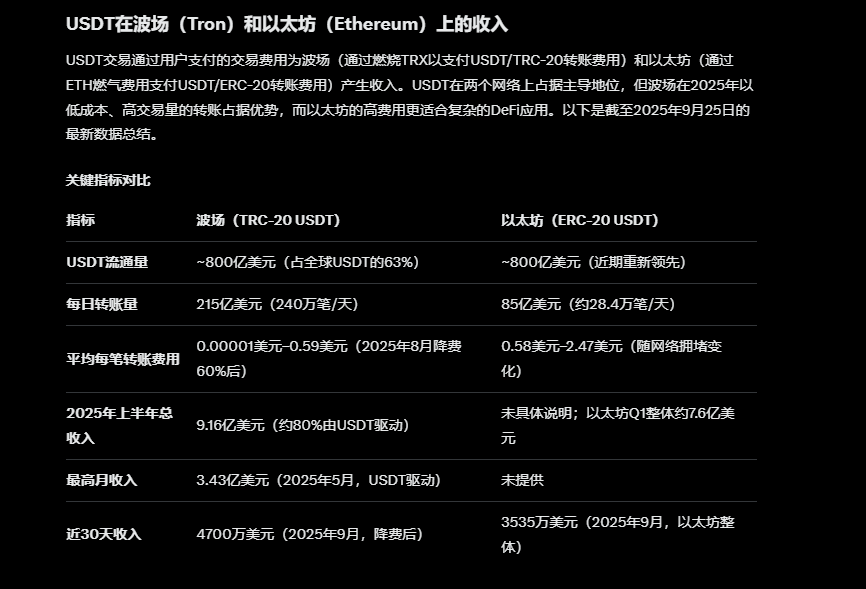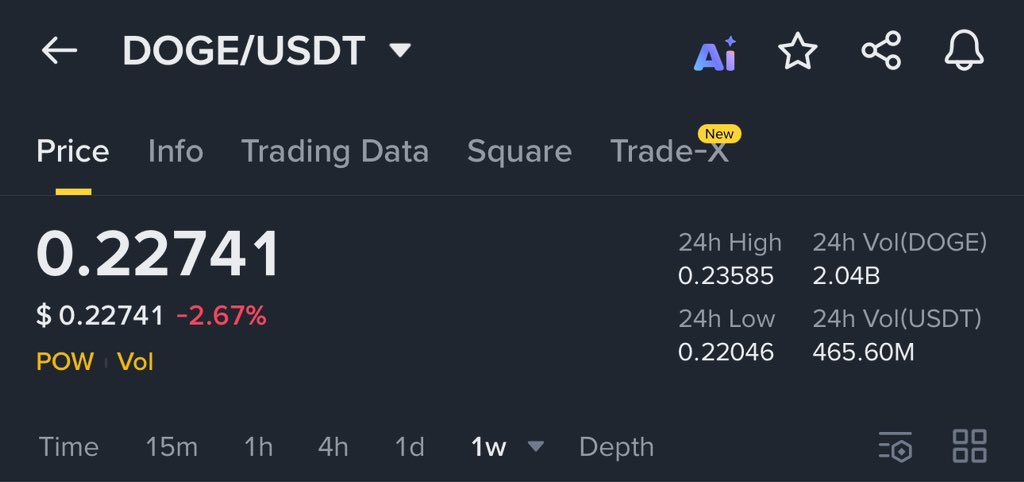Tether price
in USDCheck your spelling or try another.


About Tether

Tether’s price performance
Tether in the news
Tether, the company behind the USDT stablecoin, is seeking to raise funding in a deal...
The talks of the deals are in early stages and prospective investors have been given access to a data room over the past few weeks, Bloomberg reported.
A Bitcoin-themed tram has been revealed by Tether CEO Paolo Ardoino as operating in Milan,...
STBL transforms tokenized securities such as money market funds into freely usable stablecoins, and allow-listed, interest-accruing NFTs.
The deployment marks first syrupUSDT launch beyond Ethereum as Maple targets $5B in assets by year-end.
The token was designed to meet the U.S. stablecoin issuance standard, with Anchorage Digital and Cantor Fitzgerald supporting issuance and reserve management.
Tether on socials




Guides

Tether on OKX Learn
Tether FAQ
Stablecoins are cryptocurrencies designed to have a fixed price by having their value pegged to some cryptocurrency, commodity, fiat currency, or financial instrument or by utilizing an arbitrage system.
USDT is a stablecoin pegged to the value of the US dollar. It was launched in 2014 to facilitate the transfer of fiat currencies on the blockchain. USDT is also the largest stablecoin after USD Coin (USDC). Tether is issued by Tether Limited, a company based in Hong Kong, and operates on blockchain networks, including Bitcoin, Ethereum, and Tron. Each USDT token represents one US dollar held in reserve by Tether Limited.
USDT provides a stable and secure way to store and transfer value on the blockchain. As a stablecoin, its value is pegged to the US Dollar, which makes it less volatile than other cryptocurrencies. This stability makes it a popular choice for traders who want to minimize their exposure to cryptocurrency market fluctuations.
Another good reason to buy Tether is its wide acceptance among cryptocurrency exchanges, which makes it a convenient way to move funds between different trading platforms. However, like most digital assets, cryptocurrency is deemed high-risk and prone to sharp price changes and volatility. Therefore, always DYOR before making any financial decisions.
Easily buy USDT tokens on the OKX cryptocurrency platform. Available trading pairs in the OKX spot trading terminal include USDT/USDC, BTC/USDT, ETH/USDT, and OKB/USDT.
You can also buy USDT with over 99 fiat currencies by selecting the "Express buy" option. Other popular crypto tokens, such as Bitcoin (BTC), Ethereum (ETH), and USD Coin (USDC), are also available.
Alternatively, you can swap your existing cryptocurrencies, including XRP (XRP), Cardano (ADA), Solana (SOL), and Chainlink (LINK), for USDT with zero fees and no price slippage by using OKX Convert.
To view the estimated real-time conversion prices between fiat currencies, such as the USD, EUR, GBP, and others, into USDT, visit the OKX Crypto Converter Calculator. OKX's high-liquidity crypto exchange ensures the best prices for your crypto purchases.
Another option to buy USDT tokens is through the OKX P2P Trading marketplace. P2P trading allows users to buy and sell cryptocurrencies directly from other users without needing a middleman.
With OKX, you can easily use USDT to buy other crypto assets, including Bitcoin (BTC), Algorand (ALGO), XRP (XRP), and Bitcoin Cash (BCH), using OKX Convert. OKX Convert allows users to convert top crypto and stablecoins like USDT with zero fees and no slippage.
The OKX Crypto Converter Calculator provides a simple way for users to convert various fiat currencies, such as US Dollars (USD), Euro (EUR), and British Pound (GBP), to USDT and other cryptocurrencies.
With this tool, users can convert their fiat currency into any cryptocurrency they desire while providing up-to-date exchange rates. This information can help make an informed decision before proceeding with an exchange.
On OKX DeFi, there are several options for earning interest on USDT. Users can earn interest by staking USDT, providing liquidity to lending pools, or participating in decentralized exchanges.
To stake USDT, users can visit the Flash Deals section of OKX Earn and choose from the available staking plans that offer high-interest rates. These Flash Deals typically have a limited term of up to 7 days and are provided irregularly.
As they are available on a first-come, first-served basis, users should check the page frequently to subscribe to exciting deals before they run out.
Being a stablecoin, Tether's price is designed to be fixed at $1 and is, thus, unlikely to see any significant increase or decrease. However, the all-time high price of USDT reached $1.21 in 2017.
Likewise, USDT's price has fallen below $1 a few times. The all-time low was $0.572521, recorded on Mar 02, 2015. This usually occurs during high levels of uncertainty and fear in the markets. But, USDT has managed to regain momentum. Its stability and liquidity have made it a popular choice for traders.
Additionally, USDT's price is unlikely to stray far from $1 because as long there is positive market sentiment, the tokens can be redeemed for an equivalent amount of US dollars.
USDT is generally safe to buy and hold if you use reliable exchanges and follow basic security practices. For example, Tether Limited has a strong reputation in the cryptocurrency industry and has been audited by reputable accounting firms.
However, it's worth noting that stablecoins like USDT are not immune to risks like hacks or regulatory changes. Therefore, as with any cryptocurrency, it's essential to store your USDT in a secure wallet and to only buy from reputable sources.
USDT maintains its peg to the US dollar by holding an equivalent amount of US dollars in reserve. This means that for every USDT token issued, Tether Limited has a corresponding US dollar in reserve.
Furthermore, the company regularly publishes reports that provide transparency into its reserves and other financial information. Additionally, Tether Limited has stated that it has several mechanisms to maintain the peg, including issuing and redeeming USDT tokens based on market demand.
Dive deeper into Tether
Tether (USDT) is the world's first and most widely used stablecoin and the third-largest cryptocurrency by market cap. USDT is an Ethereum-based, asset-backed, stablecoin pegged to the US dollar. Hence, Tether's value is meant to remain consistently close to 1 USD.
Initially called Realcoin, Tether was launched in 2014 by Reeve Collins, Craig Sellars, and Brock Pierce. USDT tokens are issued by Tether Limited, a company controlled by Bitfinex, and can theoretically be redeemed at any time for an equivalent amount.
How does Tether work
Tether was initially built on top of the Bitcoin blockchain, but its network has now been expanded to run on over ten different blockchain protocols, including Ethereum (ETH), Tron (TRX), and Solana (SOL). Tether was also launched on the Omni layer, a platform for creating and trading assets on the Bitcoin network.
USDT can be minted or destroyed by its issuing company Tether Limited, and more importantly, be quickly and cheaply transferred to individuals over any supporting blockchain network. Whenever new USDT tokens are issued, Tether is meant to allocate the corresponding USD amount to its reserves, in order to ensure that USDT remains fully backed by cash and cash equivalents.
What is Tether used for?
USDT has become popular for trading across major exchanges due to its ease of use and wide acceptance. In most cases, users can also conveniently move their holdings between their Web3 wallets and exchanges.
Tether can also be used to gain some level of exposure to the US dollar. Tether Limited publishes a daily report on the value of its reserves and has quarterly assurance opinions issued by external accountants.
USDT developments
In an updated statement, Tether revealed that USDT tokens are no longer backed entirely by US dollar deposits. Instead, Tether is allegedly backed by reserves, including traditional currency, cash equivalents, short-term deposits, commercial papers, US treasury bills, corporate bonds, secured loans, precious metals, corporate funds, and more.
In January 2021, Tether Limited minted a record 2 billion USDT tokens in a single week. This came during tremendous growth in the crypto markets. The growing interest in USDT was due to several reasons, including an increasing lack of trust in the traditional financial system and rising institutional interest in cryptocurrencies.
In November 2021, USDT launched on the Avalanche platform. Avalanche, launched in 2020, is one of the blockchain industry's fastest and cheapest-to-use smart contracts platforms. The Avalanche-native USDT was first supported by Bitfinex and was said to offer cheaper and quicker USDT transactions.
In April 2022, USDT support was added for the blockchain network Kusama making Kusama the tenth network to support the asset-backed stablecoin. This represented a milestone for Kusama and an especially significant one for USDT. Kusama is a decentralized network of specialized, parallel blockchains closely related to the much more extensive Polkadot network and is often referred to as Polkadot's Canary network.
In May 2022, USDT was launched on the Polygon network. Polygon is an Ethereum scaling solution, also known as a sidechain or Layer-2 network, known for charging significantly lower transaction fees and being faster than its main network, Ethereum. At the time, Polygon had processed over $1.6 billion in transactions, had over $5 billion in locked value, and had more than 19,000 decentralized apps (DApps) running on it. Polygon is the 11th blockchain network that USDT was launched on.
Tether's expansion continued during 2023 with key partnerships such as that with Argentinian crypto payments provider KriptonMarket. The partnership supports USDT transactions at the Central Market of Buenos Aires, allowing customers to pay for goods using USDT. The collaboration also allows vendors to pay a portion of their employees' salaries in the stablecoin.
On August 12, 2024, USDT reached a new record market cap of $115 billion, on its way to capturing a 70% share of the total stablecoin market. The milestone followed noteworthy growth for the leading stablecoin, with USDT increasing its market cap by more than 40% between September 2023 and August 2024.
In the same month, Tether announced the expansion of USDT to the Aptos blockchain in a move that aimed to improve accessibility to digital currencies globally. The integration of USDT with Aptos brought lower gas fees and high performance to users of the chain, opening the door to wider adoption.
USDT price and tokenomics
Tether Limited controls the minting and burning of USDT tokens. IN theory, when there is demand for USDT, Tether mints new tokens and when USDT is sold, the corresponding number of tokens is burned.
There are about 116.99 billion USDT in circulation as of mid-2024, and USDT has a current total supply of 118 billion. Some USDT tokens are held in reserve by Tether Limited, explaining the gap between the number of tokens in circulation and the number in existence.
USDT has no supply cap, so any number of USDT tokens could potentially be created by Tether Limited, if there is sufficient collateral to back them. Minting new tokens doesn’t erode the value of existing tokens. Likewise, burning USDT tokens doesn’t increase token value.
About the founders
Tether was founded in 2014 by a group of early crypto adopters and Bitcoin enthusiasts passionate about digitizing fiat currencies. Its origins lie in the Mastercoin protocol, based on the Bitcoin blockchain.
Brock Pierce was one of the original members of the Mastercoin Foundation who helped develop and promote Mastercoin. Pierce, Craig Sellars, and Reeve Collins co-founded Tether in 2014, with Mastercoin protocol as its technological foundation.
Tether's precursor, "Realcoin," was announced in July 2014, and the first tokens were issued in October 2014. The project was renamed Tether in November of that year, alongside an announcement of entering the private beta phase, with three currencies: USTether (for USD), EuroTether (for EUR), and YenTether (for JPY).
Brock Pierce is a widely known entrepreneur and co-founder of multiple high-profile entertainment and crypto projects, including Blockchain Capital and Block.one, the company that created the EOS blockchain. He also served as Director of a non-profit organization called Bitcoin Foundation, created to improve and promote Bitcoin.
Reeve Collins is also a serial entrepreneur who had already co-founded successful companies like Traffic Marketplace, RedLever, and Pala Interactive. On the other hand, Craig Sellars has been an active member of the Omni Foundation and associated with multiple organizations, including Bitfinex, Synereo, MaidSafe Foundation, and Factom.
Disclaimer
OKX does not provide investment or asset recommendations. You should carefully consider whether trading or holding digital assets is suitable for you in light of your financial condition. Please consult your legal/tax/investment professional for questions about your specific circumstances. For further details, please refer to our Terms of Use and Risk Warning. By using the third-party website ("TPW"), you accept that any use of the TPW will be subject to and governed by the terms of the TPW. Unless expressly stated in writing, OKX and its affiliates (“OKX”) are not in any way associated with the owner or operator of the TPW. You agree that OKX is not responsible or liable for any loss, damage and any other consequences arising from your use of the TPW. Please be aware that using a TPW may result in a loss or diminution of your assets. Product may not be available in all jurisdictions.





